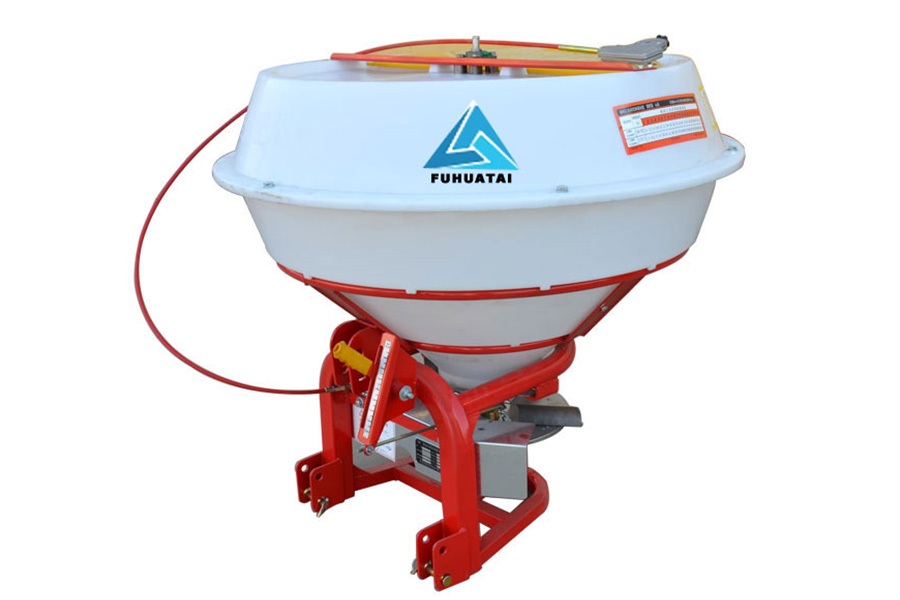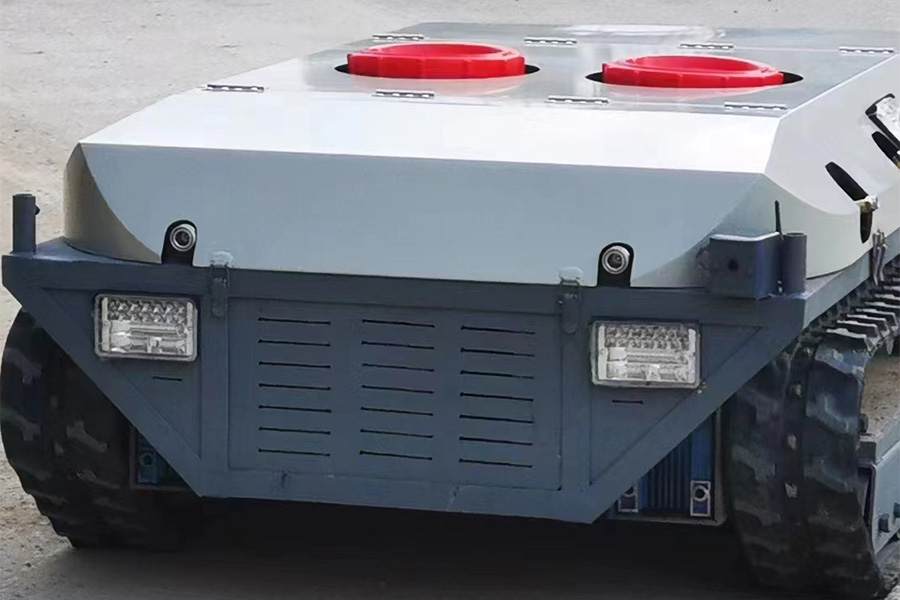Farm and agricultural machines are used during soil preparation, planting, weeding, irrigation, harvesting, forage, and haying on the fields. However, advanced agricultural equipment is updated yearly to enhance fieldwork performance.
This article discusses popular trends that can help agricultural producers stay ahead of the latest innovations and technological developments in this field.
Market growth for agricultural machinery
The global agricultural machinery market size is projected to grow at a compound annual growth rate (CAGR) of 6.0%, from US $105 billion in 2019 to US $166.491 billion in 2027. This agricultural equipment includes harvesters, tractors, cultivators, and plows to help with various farming activities.
The growth is caused by:
- Acute shortage of farm labor forces producers to look for machines that can meet workforce demands,
- The increased population that needs enhanced yields to meet global food demand,
- Rapid industrialization, rising purchasing power, and increased demand for quality packed foods,
- Government incentives, such as tax holidays, subsidies, and accessible loan facilities, improve the agricultural sector in emerging economies.
Essential farm and agricultural machinery trends
Over the years, farm machinery has experienced significant changes to improve productivity and food security. The following are the key trends to know:
Sustainable machinery
The topic of sustainability has permeated the agricultural sector, with many manufacturers designing machines that meet this global need.
For instance, machines for soil preparation are designed to prevent soil degradation and persevere soil nutrients for better yields. Agricultural machine manufacturers also design machines that efficiently use irrigation water to avoid wastage.
Farmers will also want to invest in tractors, bulldozers, and harvesters that emit few greenhouse gasses into the atmosphere to protect the environment.
The sustainability trend will likely continue to the foreseeable future to accommodate the growing food demand while alleviating environmental effects on farming.
The agricultural machine industry will likely go through a revolution to help protect the environment from global warming and climate change more than ever before.
Furthermore, many governments will likely enhance their subsidies for sustainable farm machines to encourage farmers to buy them. Agriculture is at the center of most countries’ strategies as it ensures food security; therefore, sustainable farm equipment is a trend that will shape the future of farming.
Better fertilizing machines

Fertilizer machines are undoubtedly a core part of large-scale farming today. Gone are the days when farmers applied fertilizers using their hands since technology has made it easy through fertilizer spreaders.
However, old machines did not address uniform and precise fertilizer distribution. Over-fertilization and under-fertilization occurred in some parts of the farm, resulting in suboptimal food production.
The new trend involves manufacturing advanced fertilizing machines that improve the distribution of quality fertilizers. The new machines consider the slope and elevation of the land to establish which parts need more fertilizer and which parts need less.
The fertilizing machines’ metering units are electrically driven to provide more precise control, thus avoiding the problem of over-fertilizing or under-fertilizing. For instance, the equipment may discover that steep slopes require more fertilizers because the topsoil nutrients have been washed into the valley or plains.
Precision machinery
Technological innovations have significantly affected the agricultural machinery industry, and precision agriculture is one of the exciting trends to watch out for. Precision farming needs advanced and high-tech equipment, but farmers are not intimidated by the complexity of these machines.

Some agricultural precision machinery includes drones and in-field sensors that enable farmers to focus on each crop’s requirements and minute details. The drones collect data about the soil, seeds, crops, livestock, farm equipment, fertilizer, and the atmosphere, thus helping farmers understand what factors to improve for better yields.
Precision farming is posed to dominate future large-scale farming. Some companies have begun adopting prescriptive planting and precision farming machines to help them optimize food production.
Robotic operations

Although the agricultural industry has been slower in adopting robotic operations than the manufacturing industry, there is hope that the interest will peak faster.
Most agricultural machinery innovation has reached its limits, thus limiting potential improvements in the future. However, manufacturers may use artificial intelligence and machine learning to improve these machines.
Robotic machines will enhance efficiency, perform in unfavorable conditions, and improve agricultural output. These machines do not need human intervention and can function during weekends and night hours, thus accelerating food production and reducing costs.
Consider some agricultural robotics trends that the industry will likely experience and their benefits:
- Crop weeding robots that deploy camera-guided hoes will reduce the need for herbicides.
- Precision agricultural sprayers can help to manage weeds efficiently.
- Novel sensors can be used together with robots to detect pests and diseases, thus reducing the use of pesticides since the problem can be precisely targeted instead of spraying the whole farm.
- Field robots can also help to minimize water wastage since farmers can measure and optimize irrigation water. Robots can also use precision technology to use fertilizer, thus reducing environmental impacts efficiently.
Furthermore, robotic machinery can help perform specific farm tasks, including removing waste from animal pens and carrying animal feeds.
The rising demand for agricultural products will likely motivate farmers to embrace robotic operations if they do not want to go out of business.
Independent workforce and remote solutions
Farmers and manufacturers have been toying with the idea of remote machine solutions for some time, but the pandemic called for their implementation. Every industry, including the agricultural machinery industry, started to look for ways to operate remotely.
The autonomous workforce has become one of the agricultural machinery trends that farmers are taking advantage of. Farming companies have discovered that they can reduce overhead costs by adopting remote machine solutions.
So long as there is accurate data and suitable tools, employees can successfully perform complex tasks without close supervision. They will independently handle sophisticated tasks using advanced machines, thus minimizing labor costs.
Expanded use of machines in the developing world
Many developing countries over-relied on manual labor, from soil preparation to harvesting. This can be costly and time-consuming for farmers. Over-reliance on manual labor has also contributed to food insecurity in these countries since farmers cannot do more.
However, a new trend of incorporating advanced agricultural machines is being witnessed in these countries. This trend is expected to gain greater momentum in the coming years, allowing farmers to produce more output quickly.
This trend is good news for agricultural machine manufacturers because they can target farmers from developing countries. One projection indicates that the agricultural equipment market is expected to grow at a compound annual growth rate (CAGR) of 4.8% from 2021-2031 due to government incentives.
Better irrigation systems

Water scarcity propelled by long periods of droughts is a global issue. Today, many researchers are interested in improving agricultural yields while optimally using water resources available to minimize contribution to global warming.
Researchers are designing new irrigation systems that will use less water for irrigation without affecting crop yields. With these machines, farmers can cultivate lands abandoned because of a lack of adequate water.
The internet of things has provided a platform for farmers to send precise network sensors to determine the amount of water needed for each field. Sometimes can rely on the sensors’ data to perform specific land irrigation.
Current technology focuses on reducing the amount of energy used during irrigation, but more is to come that minimizes water wastage. The modern irrigation system is also geared toward preserving soil moisture, thus reducing irrigation frequency.
Manufacturing businesses are already looking for ways to create tractors to manage water use more effectively, while agricultural machinery trends and technology show that these noble goals are within reach for farmers globally.
Large equipment investments
Another agricultural machinery trend is farmers investing in larger equipment with increased horsepower output. Large machines like tractors and combined harvesters are versatile and beneficial to the farm because they can perform more than one agricultural function.
Farm equipment is expensive, and farmers will likely go for large quality models for durability and increased productivity. This trend is also helpful for manufacturers who want to profit from their designs.
Since many companies aim to produce good crops, many businesses use large machines such as tractors and combine harvesters.
Deployment of the Internet of Things
Deployment of low-cost Internet of Things (IoT) is another agricultural machinery trend that will help farmers analyze data on temperature, weather, prices, moisture, and more for better productivity.
Farmers can use this insight to plan and make informed decisions about the needed resources and how to distribute them. Internet of Things enables farmers to collect real-time data from the farm about crops and livestock to help with disease and pest control.
Agri-tech beds currently under development are a prime example of the coming trend of implementing IoT to improve telecommunication.
Digitalization
Data is the primary seed of growth in any industry, and agricultural machinery is no different. Gathering accurate information on agricultural processes and machinery is likely to be a significant market trend.
On-field farm equipment will be more digitalized to help gather valuable information that can be utilized for future developments. This data also equips farmers to evaluate crop-related factors such as equipment performance to meet the demands.
The farm equipment industry will experience advanced digitalization to improve its performance and data collection. Manufacturers can also utilize this data to improve their equipment.
Race to electrification
Interesting trends are also seen in tractors and harvesters, where manufacturers replace hydraulic actuators with electric ones.
Several shortcomings associated with hydraulic actuators are propelling this trend, including:
- The bulky hoses that affect the mechanical properties and flexibility of the machine’s design
- High maintenance costs
- Potential contamination of the environment with oil leaks and other safety risks.
Electric actuators do not pose these threats and have many other strengths, such as high acceleration, accuracy, ease of control, low maintenance, and simple digital control.
Agricultural equipment is embracing greener technologies with the electric vehicle revolution aiming for a net-zero target. For heavy farm machinery, electrification in agriculture is highly linked to autonomous robotics.
Rental boom
Purchasing heavy tractors and machines can significantly increase farming costs and eat into the profits. As a result, a new trend in rental solutions is emerging to help increase income by reducing costs. This trend will likely become popular as farmers seek ways to increase their earnings.
Driverless tractors
Agriculture is often considered labor-intensive, which costs farmers a lot in terms of the related wages. However, the modern tractor industry is replacing driver-based tractors with self-driving tractors.

These tractors are fitted with multiple software and hardware components to reduce human intervention while increasing productivity. With these developments, farmers are embracing agricultural technology, especially tractors, to substitute manual labor.
Conclusion
Agriculture is the backbone of most economies, and agricultural machinery is trending towards integrating smart technology. As a result, the agricultural machinery industry continues to experience growth with new trends promising improved food production and reduced costs.
Farmers can look forward to exciting trends like using drones to gather real-time data, adopting sustainable machines, better fertilization and irrigation systems, digitalization, autonomous machines, and advanced precision.








